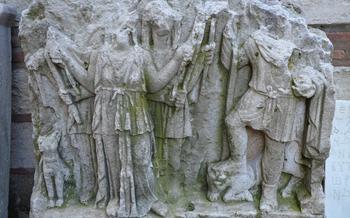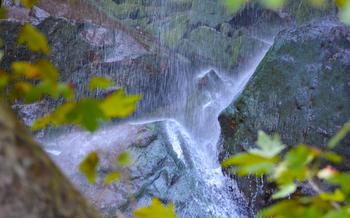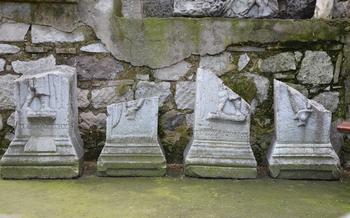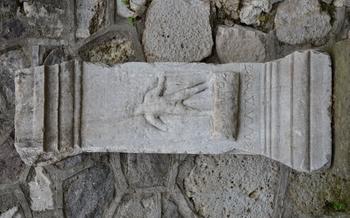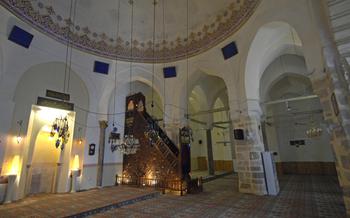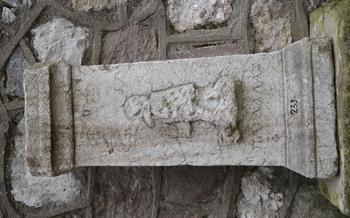
Sipil Cave
- A Journey to Sipil Cave: Unveiling Nature's Masterpiece
- History and Significance
- Geographical Location and Accessibility
- Myths and Legends
- Best Time to Visit
- Navigating the Labyrinth: A Comprehensive Guide
- Witnessing Nature's Canvas: The Art of Stalactites and Stalagmites
- Echoes of the Past: Discovering Archaeological Treasures
- A Realm of Wonders: The Diverse Wildlife of Sipil Cave
- Unraveling the Mysteries: Guided Tours and Exploration
- A Photographer's Paradise: Capturing the Cave's Essence
- A Walk Through Time: Exploring the Cave's Historical Significance
- Preserving the Wonder: Sustainable Tourism Practices
- Unlocking the Secrets: Research and Exploration
- Accommodations and Amenities: A Comfortable Stay
- Transportation Hub: Exploring Beyond Sipil Cave
- A Journey of Discovery: Beyond the Cave's Wonders
- Insider Tip: Unveiling Hidden Gems
A Journey to Sipil Cave: Unveiling Nature's Masterpiece
Nestled in the heart of Manisa, Turkey, the Sipil Cave stands as a testament to nature's creative prowess. With its captivating history, geographical allure, and intriguing myths, this subterranean marvel beckons travelers to embark on an unforgettable journey.
History and Significance
The Sipil Cave has a rich and storied past, dating back to prehistoric times. Archaeological evidence suggests that the cave served as a shelter for ancient civilizations, leaving behind remnants of their existence that have captured the imagination of historians and archaeologists alike. Over the centuries, the cave has become a symbol of cultural heritage, drawing visitors from far and wide who seek to unravel its mysteries and connect with its ancient past.
Geographical Location and Accessibility
The Sipil Cave is situated in the Salihli district of Manisa, approximately 80 kilometers from the city center. Its strategic location amidst picturesque landscapes makes it an ideal destination for nature enthusiasts and adventure seekers. The cave is easily accessible by road, with well-maintained highways leading directly to its entrance. Visitors can opt to drive their own vehicles or utilize public transportation services, which provide convenient connections to the cave.
Myths and Legends
The Sipil Cave is deeply entwined with local folklore and mythology, adding an air of enchantment to its allure. According to one legend, the cave was once the dwelling place of a giant named Sipylus, who was renowned for his strength and wisdom. Another tale tells of a beautiful princess who was imprisoned within the cave by a wicked sorcerer, only to be rescued by a brave hero who ventured into its depths. These captivating stories have been passed down through generations, fueling the mystique and charm of the Sipil Cave.
Best Time to Visit
To fully appreciate the splendor of the Sipil Cave, it is recommended to visit during the spring or autumn seasons. During these periods, the weather is pleasant, with warm temperatures ideal for exploring the cave's intricate passageways. Summer months can be hot and crowded, while winter conditions may make the cave's terrain more challenging to navigate. By planning your visit during the shoulder seasons, you can avoid the crowds and immerse yourself in the serene beauty of the cave.
Navigating the Labyrinth: A Comprehensive Guide
To embark on a fulfilling exploration of the Sipil Cave, a detailed map or guide can serve as your compass. This invaluable tool will help you navigate the cave's intricate network of chambers, passages, and tunnels, ensuring you don't miss any hidden wonders along the way. The map will highlight notable landmarks or highlights within the cave, such as particularly impressive stalactite and stalagmite formations, ancient rock art, or archaeological discoveries. It's essential to prioritize safety while exploring the cave. Sturdy footwear with good traction is recommended, as the ground can be slippery. Additionally, visitors should be mindful of low-hanging formations and narrow passages that may require crouching or crawling. The recommended duration for a fulfilling exploration of the Sipil Cave typically ranges from one to three hours, depending on your pace and level of interest. Take your time to appreciate the cave's natural beauty, marvel at its geological wonders, and immerse yourself in its captivating atmosphere.
Witnessing Nature's Canvas: The Art of Stalactites and Stalagmites
Journey into the heart of Sipil Cave and marvel at the breathtaking display of stalactites and stalagmites. These natural sculptures, formed over millennia by the patient dripping of mineral-rich water, adorn the cave's walls and ceilings like an intricate work of art.
The scientific process behind their formation is fascinating. As water seeps through cracks in the cave's limestone bedrock, it dissolves minerals such as calcite and gypsum. When this water drips from the ceiling, it leaves behind a tiny deposit of minerals. Over time, these deposits accumulate, forming stalactites that hang like icicles from the cave's ceiling.
Stalactites grow downward, while stalagmites, their counterparts, grow upward from the cave floor. When a stalactite and a stalagmite meet, they form a column, creating a mesmerizing display of natural architecture.
The shapes and sizes of these formations are as diverse as they are captivating. Some stalactites are slender and delicate, resembling thin threads hanging from the ceiling. Others are massive and imposing, resembling giant pillars supporting the cave's roof. Stalagmites, too, vary in shape, from slender spikes to broad, rounded mounds.
The colors and patterns that adorn the cave walls are equally captivating. The minerals that seep through the limestone often contain impurities, which create a vibrant array of colors, from pale yellows and oranges to deep reds and browns. The water's flow rate and the chemical composition of the limestone also influence the formation of intricate patterns, adding to the cave's visual allure.
Conservation efforts are crucial to preserving these natural wonders. Sipil Cave is a protected site, and visitors are encouraged to respect and protect its delicate formations. Touching or damaging the stalactites and stalagmites can disrupt their growth and compromise their beauty. By following conservation guidelines and adhering to responsible exploration practices, we can ensure that future generations can continue to marvel at these awe-inspiring creations of nature.
Echoes of the Past: Discovering Archaeological Treasures
Sipil Cave's historical significance extends beyond its natural wonders, as it served as a shelter for ancient civilizations, leaving behind a treasure trove of archaeological wonders. Excavations within the cave have unearthed an array of artifacts, including pottery, tools, and remnants of hearths, providing glimpses into the lives of past inhabitants. These findings suggest that the cave was occupied during various periods, from the Neolithic era to the Byzantine Empire.
The cave's strategic location along ancient trade routes made it a natural refuge for travelers and merchants seeking shelter from harsh weather or lurking dangers. Its hidden chambers and secluded nooks offered a sanctuary for those seeking refuge from conflicts or persecution. The discovered artifacts shed light on the diverse cultural influences that converged within the cave, making it a microcosm of the region's rich history.
By exploring Sipil Cave, visitors can embark on a journey through time, connecting with the echoes of ancient civilizations that once called this subterranean world their home. The tangible remains left behind by these past inhabitants provide a profound sense of connection to the region's deep-rooted history and serve as a reminder of the enduring human presence that has shaped this extraordinary natural wonder.
A Realm of Wonders: The Diverse Wildlife of Sipil Cave
Sipil Cave is home to a diverse array of animal species that have adapted to its unique environment. Bats are the most prominent inhabitants, with several species roosting within the cave's chambers. Their echolocation calls create a constant chorus that adds to the cave's eerie atmosphere. Other mammals that make their home in the cave include foxes, jackals, and porcupines, which have adapted to the cave's darkness and humidity.
The cave also supports a variety of invertebrates, including spiders, centipedes, and millipedes. These creatures play a vital role in the cave's ecosystem by breaking down organic matter and providing food for other animals. Amphibians and reptiles, such as frogs, salamanders, and lizards, can also be found in the cave, seeking refuge from the harsh conditions outside.
Conservation initiatives are in place to protect the cave's delicate ecosystem and its inhabitants. Visitors are encouraged to respect the wildlife and avoid disturbing their natural habitats. Responsible wildlife viewing practices, such as maintaining a respectful distance and avoiding the use of flash photography, help to minimize the impact on these sensitive creatures.
Unraveling the Mysteries: Guided Tours and Exploration
Exploring Sipil Cave with the guidance of experienced local experts is an enriching experience that enhances your understanding and appreciation of this natural wonder. Guided tours are available for visitors who seek a deeper connection with the cave's intricate formations, hidden chambers, and captivating history. Knowledgeable guides provide insightful commentary, revealing the scientific, cultural, and archaeological significance of the cave. They lead visitors through the labyrinthine passages, ensuring safety and illuminating the unique features that make Sipil Cave a remarkable destination.
Joining a guided tour offers several advantages. First, it ensures that you won't miss any of the cave's highlights. Guides will take you to the most impressive formations, such as the "Crystal Palace" or the "Frozen Waterfall," and explain their geological origins. Second, guides can provide historical context and share stories about the cave's past inhabitants and explorers. Third, guided tours often include access to restricted areas of the cave that are not open to the general public.
When selecting a tour operator, consider their reputation, experience, and group size. Smaller groups allow for more personalized attention and a more intimate exploration of the cave. It is also important to choose a tour that matches your fitness level and interests. Some tours are more physically demanding than others, and some focus on specific aspects of the cave, such as its geology or history.
Guided tours of Sipil Cave offer a truly immersive and educational experience. With the guidance of knowledgeable experts, you will gain a deeper appreciation for the cave's natural beauty, its rich history, and its ongoing scientific significance.
A Photographer's Paradise: Capturing the Cave's Essence
The Sipil Cave offers a photographer's paradise, with its mesmerizing formations, intricate patterns, and unique lighting conditions. Whether you're an amateur enthusiast or an experienced professional, the cave provides ample opportunities to capture stunning images. To make the most of your photography experience, consider these guidelines and recommendations:
Study the Light: Lighting plays a crucial role in cave photography. Visit the cave at different times of the day to observe how the natural light illuminates the formations. Golden hour, just after sunrise or before sunset, often provides the most dramatic and warm lighting.
Tripod Essential: A sturdy tripod is indispensable for sharp and blur-free shots. The cave's low-light conditions often require longer exposure times, making a tripod essential to avoid camera shake.
Wide-Angle Wonders: A wide-angle lens is ideal for capturing the cave's vast chambers and sweeping vistas. It allows you to fit more of the cave's grandeur into a single frame, creating a sense of scale and depth.
Experiment with Shutter Speed: Experiment with different shutter speeds to achieve various effects. Slow shutter speeds can capture the movement of water droplets or create ethereal light trails, while faster shutter speeds freeze the moment, capturing the cave's intricate details.
Embrace the Darkness: Don't be afraid to embrace the cave's darkness. Underexposing your shots can create a sense of mystery and atmosphere, highlighting the cave's unique features.
Respect the Environment: Always prioritize the preservation of the cave's delicate environment. Avoid using flash photography, as it can disturb the cave's wildlife and damage the formations. Instead, rely on natural light or artificial lighting provided by the cave management.
A Walk Through Time: Exploring the Cave's Historical Significance
Sipil Cave has been a witness to countless historical events and has played a pivotal role in the lives of people throughout the ages. Archaeological evidence suggests that the cave was inhabited as early as the Neolithic period, and it continued to be used as a shelter and refuge by various civilizations over the centuries. During the Byzantine era, the cave served as a hideout for Christians fleeing persecution, and it is believed that they left behind religious symbols and inscriptions on the cave walls. In the Ottoman period, the cave was used as a storage facility for agricultural products and as a hiding place for valuables during times of war. The cave's historical significance is further enhanced by the fact that it is mentioned in ancient texts and legends, adding to its mystique and allure. Exploring the cave is not just a journey into the depths of nature but also a walk through the annals of time, where visitors can uncover the rich history and cultural heritage of the region.
Preserving the Wonder: Sustainable Tourism Practices
As responsible travelers, we must prioritize the preservation of Sipil Cave's delicate ecosystem. Sustainable tourism practices play a crucial role in ensuring the cave's longevity for future generations to appreciate. Here are some guidelines to follow:
-
Respect the Cave's Environment: Avoid touching or damaging the cave's formations. Refrain from littering and dispose of waste properly in designated areas.
-
Follow Designated Trails: Stick to designated trails to minimize impact on the cave's fragile environment. Avoid exploring unauthorized areas or venturing off the marked paths.
-
Minimize Noise and Light Pollution: Keep noise levels low to avoid disturbing wildlife and disrupting the cave's ambiance. Use flashlights responsibly and avoid excessive lighting that could harm cave-dwelling creatures.
-
Support Sustainable Tourism Initiatives: Choose tour operators who prioritize sustainable practices and actively contribute to the cave's conservation. Look for certifications or eco-labels that demonstrate their commitment to sustainability.
-
Educate Yourself and Others: Learn about the cave's ecosystem and its significance. Share your knowledge with fellow visitors to raise awareness about the importance of responsible tourism.
By embracing these sustainable practices, we can help protect Sipil Cave's natural beauty and ensure its preservation for generations to come.
Unlocking the Secrets: Research and Exploration
The Sipil Cave has captivated the curiosity of researchers and explorers alike, leading to ongoing scientific investigations that delve into its mysteries. Collaborations between universities, institutions, and researchers have yielded remarkable discoveries and insights. Archaeological excavations have unearthed artifacts and remnants that shed light on past human activities and civilizations that sought refuge within the cave's embrace. Geological studies have illuminated the processes responsible for the cave's formation and the intricate mechanisms that govern its unique ecosystem. Ongoing research aims to unravel the cave's hidden secrets, including its role in regional history, the evolution of its diverse wildlife, and the preservation of its delicate environment. Visitors to the cave have the opportunity to participate in research projects, contributing to the collective knowledge and understanding of this remarkable natural wonder.
Accommodations and Amenities: A Comfortable Stay
When planning your visit to Sipil Cave, finding comfortable accommodations is essential. The Manisa region offers a range of options to suit different preferences and budgets, from budget-friendly guesthouses to luxurious resorts.
For those seeking a cozy and affordable stay, several guesthouses and hostels are located near the cave, offering basic amenities and a warm, local atmosphere. These accommodations often provide shared spaces, allowing you to interact with fellow travelers and share your caving experiences.
For a more upscale experience, several hotels and resorts in the area offer a range of amenities, including swimming pools, spas, and fine dining restaurants. These accommodations provide a luxurious retreat after a day of exploring the cave, ensuring a comfortable and relaxing stay.
When choosing your accommodation, consider factors such as proximity to the cave, amenities, and budget. Online booking platforms and travel agencies can help you find the best deals and compare options based on your preferences.
Transportation Hub: Exploring Beyond Sipil Cave
Reaching Sipil Cave is a breeze, thanks to the convenient transportation options available. Buses and trains regularly ply the route to the cave, making it easily accessible from nearby cities and towns. For those who prefer the flexibility of self-driving, car rental services are readily available. Ample parking facilities ensure that visitors can leave their vehicles safely while they embark on their cave exploration.
Sipil Cave serves as a gateway to other captivating attractions in the region. History buffs can delve into the rich past of Manisa by visiting the ancient city of Sardis, home to impressive ruins and artifacts. Nature enthusiasts will find solace in the picturesque Spil Mountain National Park, renowned for its stunning landscapes and hiking trails.
To make the most of your time in Manisa, consider extending your stay and exploring the region's hidden gems. Embark on a culinary adventure by savoring local delicacies, immerse yourself in traditional Turkish culture, and discover the warmth and hospitality of the local people. The Manisa region offers a harmonious blend of history, nature, and culture, ensuring an unforgettable travel experience.
A Journey of Discovery: Beyond the Cave's Wonders
While Sipil Cave is an extraordinary destination, the Manisa region offers a wealth of additional attractions to captivate visitors. History buffs can delve into the ancient city of Sardis, once the capital of the Lydian Empire. Nature lovers can explore the scenic Spil Mountain National Park, home to diverse flora and fauna. For a unique cultural experience, immerse yourself in the traditional Turkish handicrafts and culinary delights of the region.
Design an itinerary that allows you to delve deeper into the region's treasures. Consider spending a few days exploring the cave and its surroundings. Visit local villages, interact with the friendly locals, and savor the authentic flavors of Turkish cuisine. Whether you're an adventure seeker, a history enthusiast, or a nature lover, the Manisa region promises an unforgettable journey of discovery beyond the wonders of Sipil Cave.
Insider Tip: Unveiling Hidden Gems
Beyond the well-trodden paths of Sipil Cave, there lies a realm of hidden treasures waiting to be discovered. Venture off the beaten track and uncover secret spots that reveal the cave's true essence. Explore hidden chambers adorned with unique formations, untouched by the footsteps of many. Seek out secluded corners where the silence is palpable, allowing you to connect with the cave's tranquil soul.
Embrace the local culture and engage with the friendly residents of Manisa. Immerse yourself in their traditions and customs, learning about their way of life and the significance of the cave in their heritage. This will enhance your understanding of the region and provide a deeper appreciation for its natural and cultural wonders.
To truly experience the cave like a local, consider venturing out during the off-season. This is when the crowds dissipate, and you can bask in the serenity of the cave without the hustle and bustle of peak tourist periods. The tranquility of the off-season offers a unique opportunity to connect with the cave's energy and immerse yourself in its timeless beauty.
Embrace the spirit of exploration and let curiosity guide your journey through Sipil Cave. Uncover the hidden gems that lie in wait, and create memories that will last a lifetime. Step into the realm of the unknown and discover the true magic of this subterranean wonderland.
